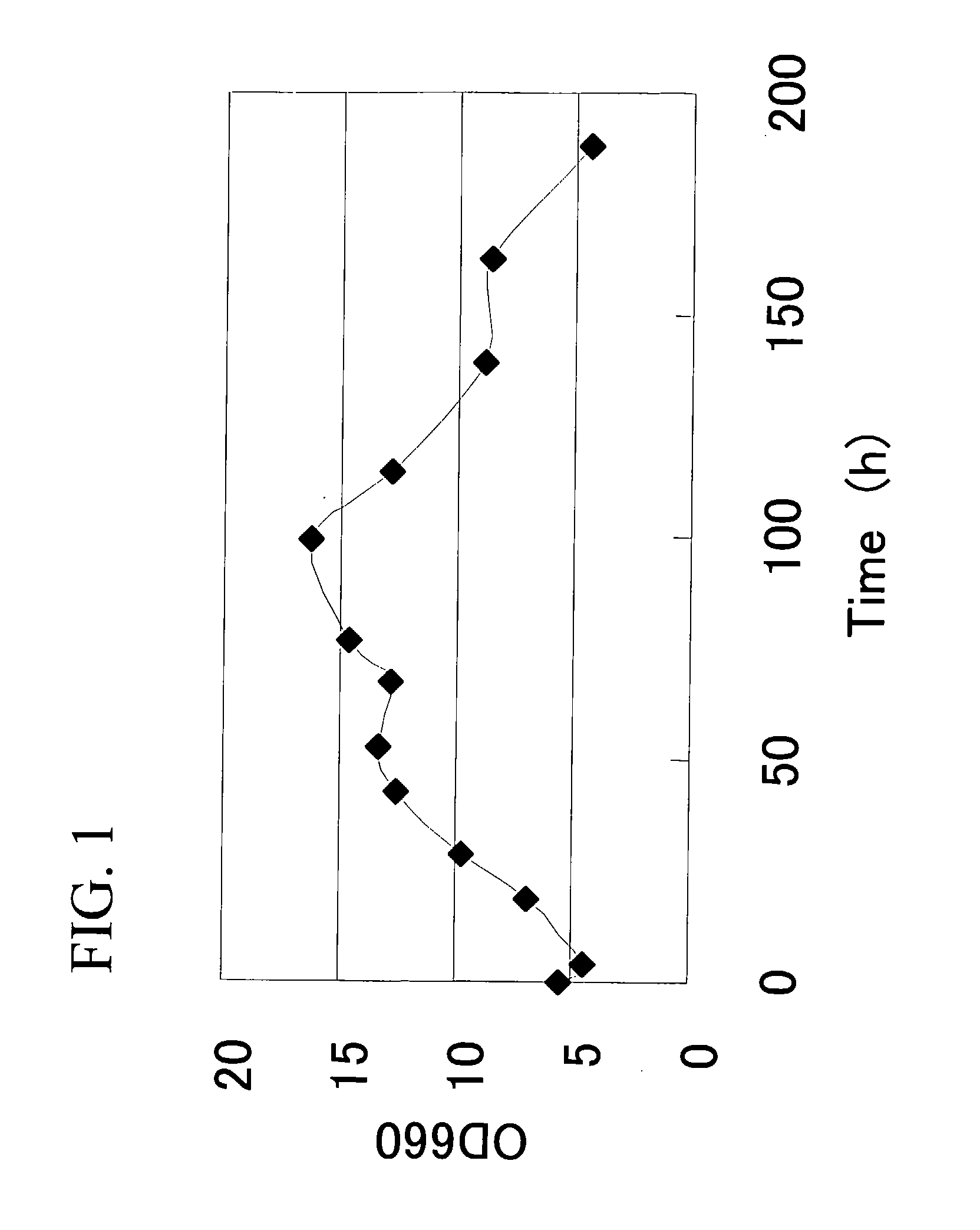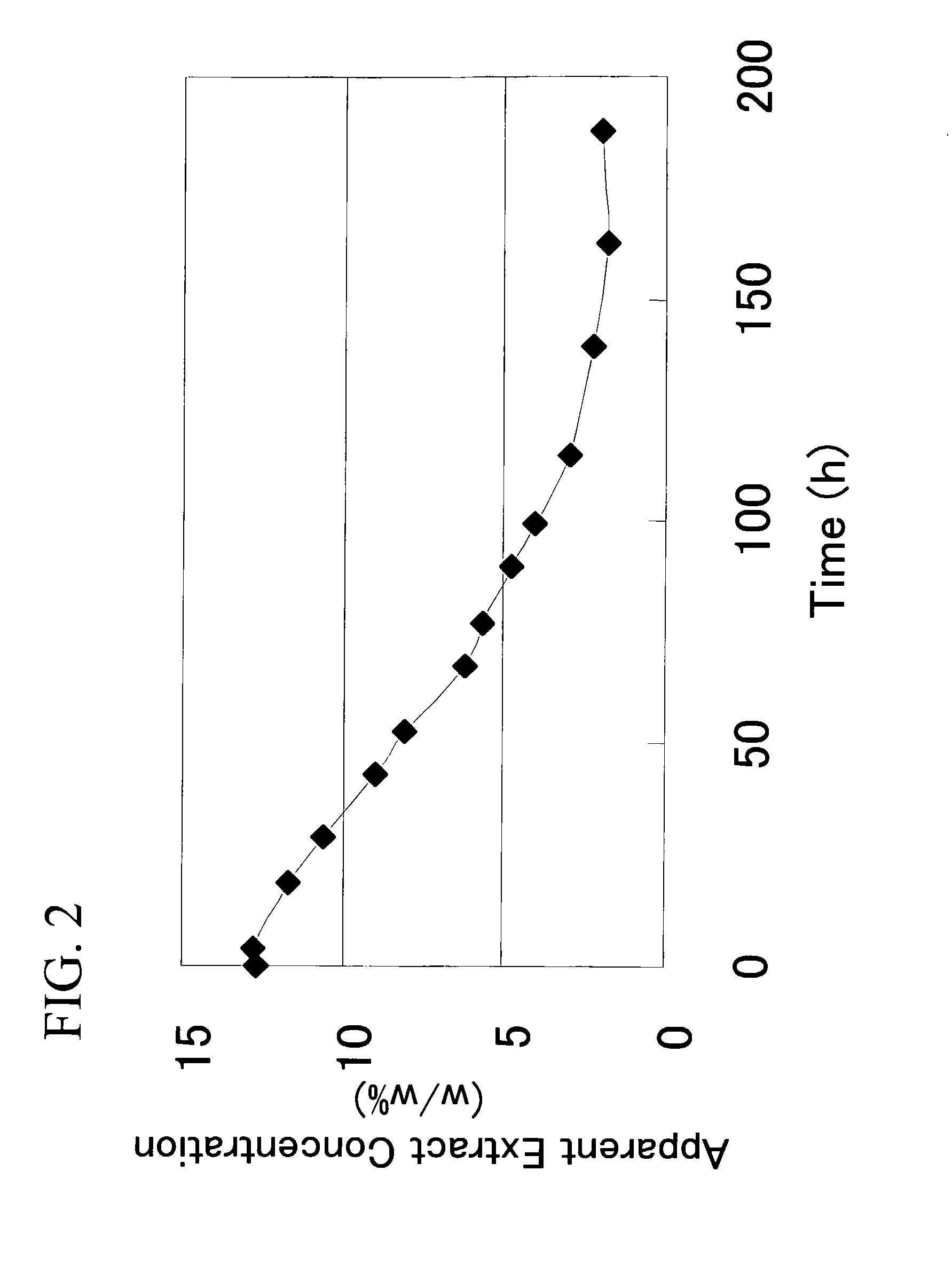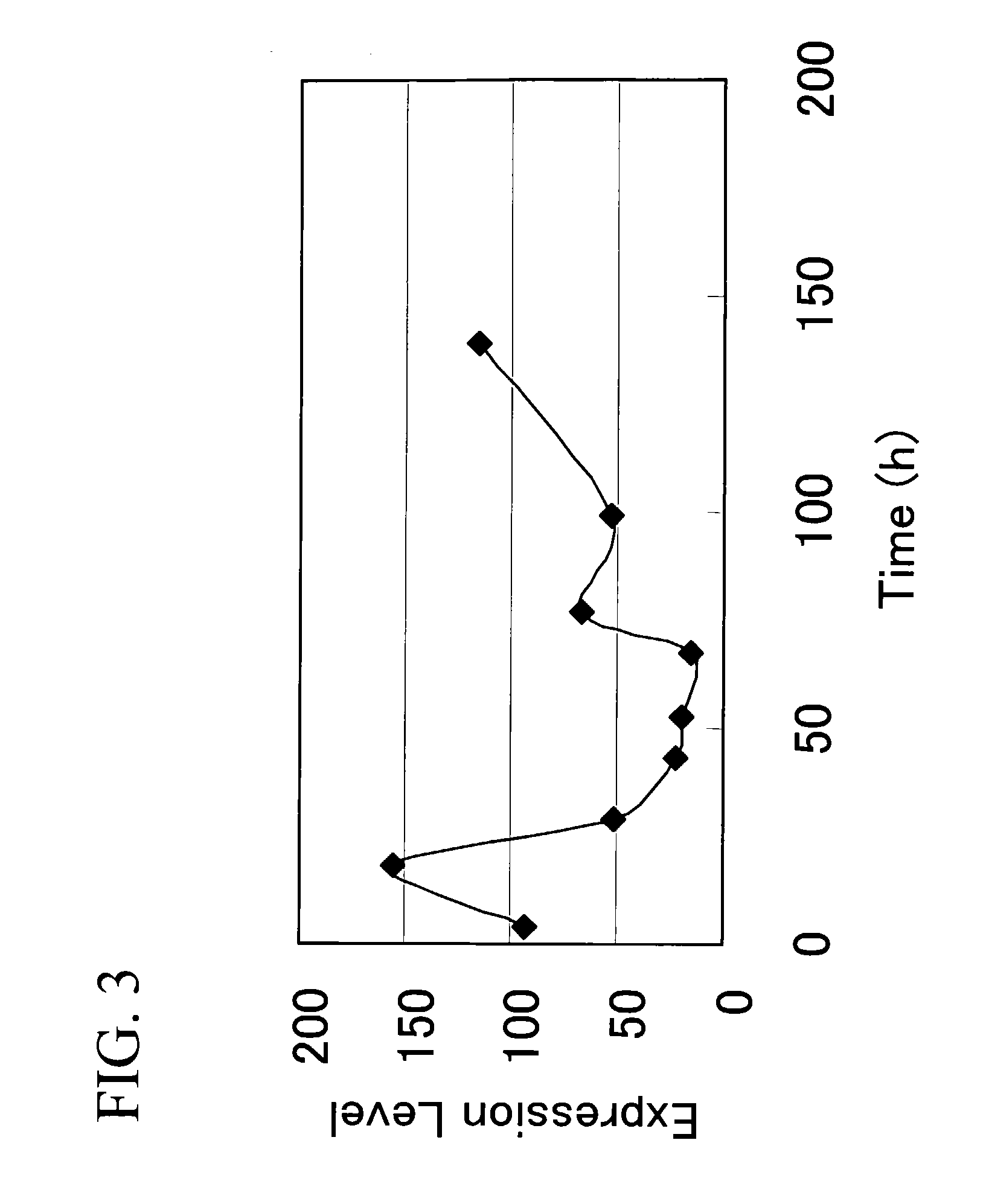Ammonia transporter gene and use thereof
a technology of ammonia transporter and transporter gene, which is applied in the field of ammonia transporter gene, can solve the problem of difficult control of amino acid content at the completion of fermentation
- Summary
- Abstract
- Description
- Claims
- Application Information
AI Technical Summary
Benefits of technology
Problems solved by technology
Method used
Image
Examples
example 1
Cloning of Ammonia Transporter (NonScMEP1)
[0127]A specific ammonia transporter gene (nonScMEP1) (SEQ ID NO:1) from a lager brewing yeast has been found, as a result of a search utilizing the comparison database described in Japanese Patent Application Laid-Open No. 2004-283169. Based on the nucleotide sequence information acquired, primers nonScMEP1_F (SEQ ID NO: 5) and nonScMEP1_R (SEQ ID NO: 6) were designed to amplify the full-length of the gene. PCR was carried out using chromosomal DNA of a genome sequencing strain, Saccharomyces pastorianus Weihenstephan 34 / 70 (may be abbreviated as “W34 / 79 strain”), as a template to obtain DNA fragments including the full-length gene for nonScMEP1.
[0128]The nonScMEP1 gene fragments thus obtained were inserted into pCR2.1-TOPO vector (Invitrogen) by TA cloning. The nucleotide sequences for the nonScMEP1 gene were analyzed by Sanger's method (F. Sanger, Science, 214: 1215, 1981) to confirm the nucleotide sequence.
example 2
Analysis of Expression of nonScMEP1 Gene During Beer Fermentation
[0129]A beer fermentation test was conducted using a lager brewing yeast, Saccharomyces pastorianus W34 / 70, and mRNA extracted from the yeast cells during fermentation was analyzed by a yeast DNA microarray.
Wort extract concentration12.69%Wort content70 LWort dissolved oxygen concentration8.6 ppmFermentation temperature15° C.Yeast pitching rate12.8 × 106 cells / mL
[0130]The fermentation liquor was sampled over time, and the time-course changes in amount of yeast cell growth (FIG. 1) and apparent extract concentration (FIG. 2) were observed. Simultaneously, sampling of yeast cells was performed, and the prepared mRNA was biotin-labeled and subjected to hybridization with the beer yeast DNA microarray disclosed in Japanese Patent Application Laid-Open No. 2004-283169. Signal detection was performed using the GeneChip Operating system (GCOS; GeneChip Operating Software 1.0, manufactured by Affymetrix Co). Expression pattern...
example 3
Construction of NonScMEP1-Highly Expressed Strain
[0131]The nonScMEP1 / pCR2.1-TOPO described in Example 1 was digested with the restriction enzymes SacI and NotI to prepare a DNA fragment containing the entire length of the protein-encoding region. This fragment was ligated to pYCGPYNot treated with the restriction enzymes SacI and NotI, thereby constructing the nonScMEP1 high expression vector nonScMEP1 / pYCGPYNot. pYCGPYNot is a YCp-type yeast expression vector. A gene inserted is highly expressed by the pyruvate kinase gene PYK1 promoter. The geneticin-resistant gene G418r is included as the selectable marker in the yeast, and the ampicillin-resistant gene Ampr as the selectable marker in Escherichia coli.
[0132]Using the high expression vector prepared by the above method, the strain Saccharomyces pasteurianus Weihenstephaner 34 / 70 was transformed by the method described in Japanese Patent Application Laid-open No. 7-303475. The transformants were selected on a YPD plate culture (1...
PUM
| Property | Measurement | Unit |
|---|---|---|
| temperature | aaaaa | aaaaa |
| elongation temperature | aaaaa | aaaaa |
| elongation temperature | aaaaa | aaaaa |
Abstract
Description
Claims
Application Information
 Login to View More
Login to View More - R&D
- Intellectual Property
- Life Sciences
- Materials
- Tech Scout
- Unparalleled Data Quality
- Higher Quality Content
- 60% Fewer Hallucinations
Browse by: Latest US Patents, China's latest patents, Technical Efficacy Thesaurus, Application Domain, Technology Topic, Popular Technical Reports.
© 2025 PatSnap. All rights reserved.Legal|Privacy policy|Modern Slavery Act Transparency Statement|Sitemap|About US| Contact US: help@patsnap.com



